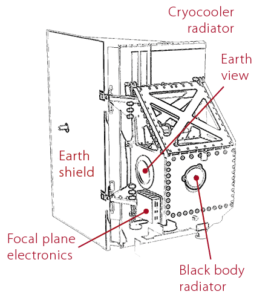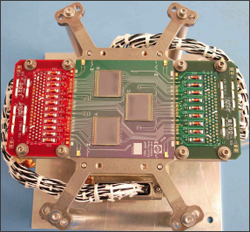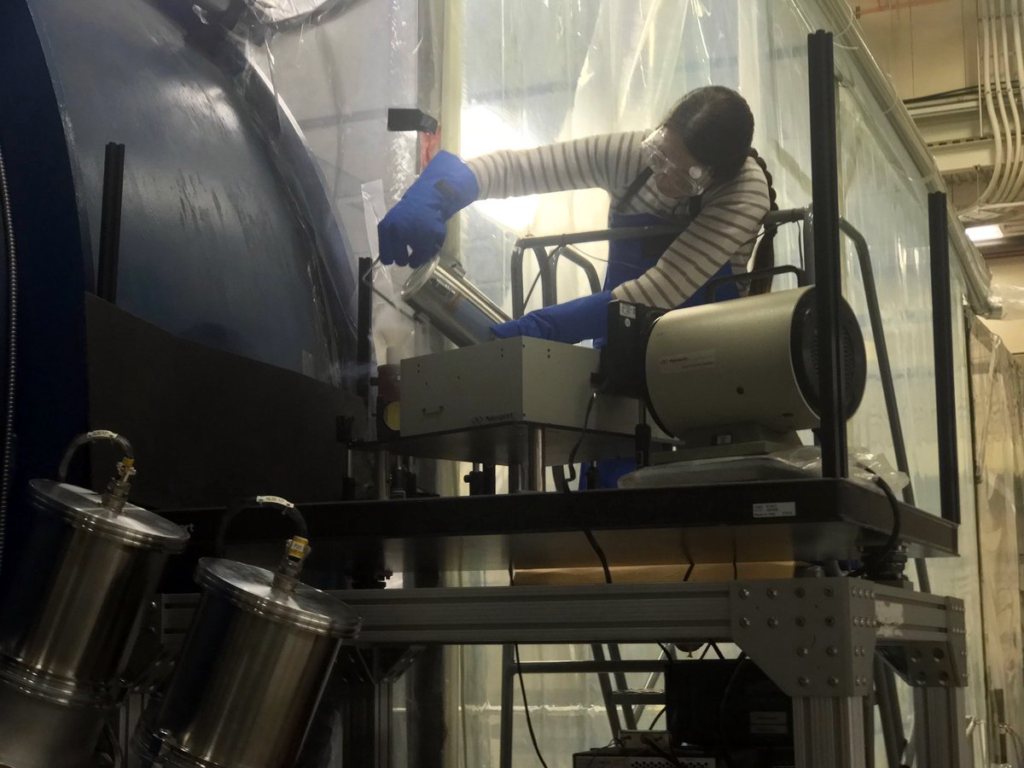The TIRS-2 instrument is a two-band thermal imaging sensor with a push broom sensor (like OLI-2). Its focal plane has long arrays of photosensitive detectors.
There is a four-element refractive telescope that focuses an f/1.64 beam of thermal radiation onto a focal plane that is cryogenically cooled. TIRS-2 has a 15-degree field-of-view to match the 185 km across-track swath of OLI-2. The TIRS-2 focal plane holds three modules with quantum-well-infrared-photodetector (QWIP) arrays arranged in an alternating pattern along the focal plane centerline.

Spectral filters cover each focal plane module to create TIRS-2’s two specified bandwidths. Each QWIP array is 640 detectors long cross-track allowing for overlap between the arrays to produce an effective linear array of 1850 pixels spanning across the 185 km (115 mi) ground swath.
The field-of-view is flipped between nadir (Earth) and both an internal blackbody and a deep space view used for on-orbit radiometric calibration using a mirror controlled by a scene select mechanism. This allows the view to be changed without changing the nominal Earth-viewing attitude of the Landsat 9 spacecraft


A two-stage mechanical cryocooler cools TIRS-2’s focal plane. This permits the QWIP detectors to function at their required temperature of 43 K (-382° F/ -230° C).
There are two radiators mounted to the side of the TIRS-2 instrument structure. One dissipates heat from the cryocooler and the other passively maintains a constant TIRS-2 telescope temperature of 185 K (-127° F/ -88° C).


